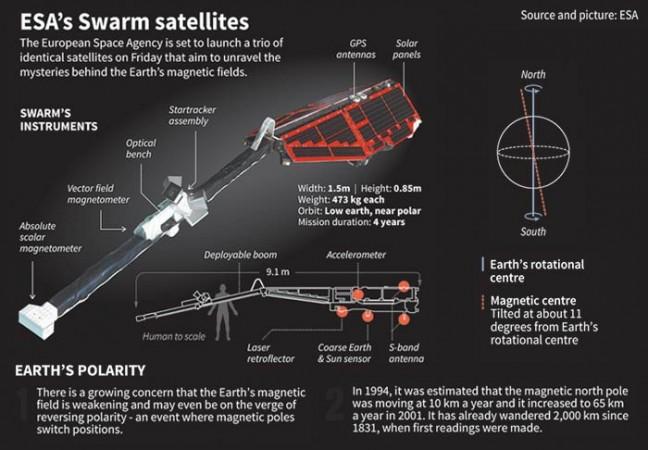![Scientists discover reason for GPS blackout. [Representational Image] In Picture: A nuclear device explodes in a high-altitude test conducted by the U.S. government in the early 1960s. The aims of the ionospheric tests, conducted in 1962 and 1963, were to see if a missile could operate in a nuclear environment and if a U.S. re-entry vehicle could survive a nuclear blast nearby. Film of the tests were released at a Historical Nuclear Weapons Test Film Festival June 10. Ionosphere thunderstorms](https://data1.ibtimes.co.in/en/full/628316/ionosphere-thunderstorms.jpg?h=450&l=50&t=40)
Scientists working with the European Space Agency have found the real reason behind Global Positioning System (GPS) blackouts in the low-orbit GPS satellites.
These blackouts are more pronounced when flying over the low-orbit GPS satellites over the equator between Africa and South America.
The scientists discovered that these happen due to "thunderstorms" in the ionosphere. Ionosphere is the region of Earth's upper atmosphere, which is ionised by solar and cosmic radiation.
"These thunderstorms occur when the number of electrons in the ionosphere undergoes large and rapid changes. This tends to happen close to Earth's magnetic equator and typically just for a couple of hours between sunset and midnight," said ESA, Defense News reported.
So how were the scientists able to discover this? This was done via ESA's Swarm spacecrafts, which was launched in 2013 to study Earth's magnetic field. The Swarm is a three satellite constellation and are placed in two different polar orbits.
The three satellites consist of instruments to measure Earth's magnetic field vector, electric field, non-gravitational accelerations and Laser Range Reflector. They also carry GPS receivers meant to collect information on the satellites orbits.

"As its name suggests, the ionosphere is where atoms are broken up by sunlight, which leads to free electrons. A thunderstorm scatters these free electrons, creating small bubbles with little or no ionised material. These bubbles disturb the GPS signals so that the Swarm GPS receivers can lose track," ESA added.















